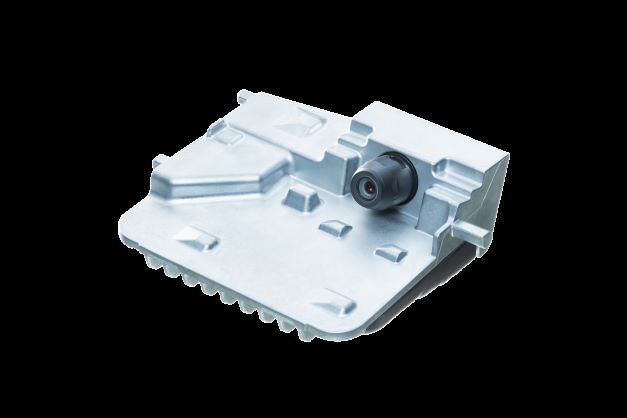
Denso said its newly developed Global Safety Package 3, an active safety system designed to improve the safety of vehicles by giving them high sensing capability of their surroundings, was being supplied to the Toyota group for OEM fit in the Hino Ranger, Lexus NX, and (Japanese domestic market) Toyota Noah and Voxy which were released in August 2021, October 2021, and January 2022, respectively.
The package uses the combined performance of a millimetre wave radar sensor and vision sensor to assist the driver in controlling the vehicle safely. The radar sensor detects the shapes of road objects, such as vehicles and guardrails, while the vision sensor uses a camera to detect the environment ahead of the vehicle.
This is the third generation of the package.
Denso said it developed the latest version to improve active safety and driver assistance performance while reducing product size and cost.
Millimetre-wave radar sensor
With a wider detection angle, longer detection range, and improved speed resolution, this product helps avoid collisions at intersections, whether with other vehicles or pedestrians. Thanks to its improved detection capability and reduced size and cost, this radar sensor has fewer installation requirements and can be used in more vehicle types and models.
How well do you really know your competitors?
Access the most comprehensive Company Profiles on the market, powered by GlobalData. Save hours of research. Gain competitive edge.

Thank you!
Your download email will arrive shortly
Not ready to buy yet? Download a free sample
We are confident about the unique quality of our Company Profiles. However, we want you to make the most beneficial decision for your business, so we offer a free sample that you can download by submitting the below form
By GlobalDataImprovements include:
- A wider detection angle and a longer detection range with improvements such as in-antenna design and radio wave transmission efficiency.
- Improved speed resolution by increasing the frequency modulation of radio wave transmissions.
- Reduced size and cost, with the new model using fewer than half the number of parts compared to the previous generation. This was achieved by integrating the antenna and power supply board, simplifying product structure and leveraging multiple-input and multiple-output (MIMO) technology, which allows for a smaller antenna with fewer channels to transmit and receive radio waves.
Vision sensor
The sensor has a wider horizontal field of view to help with collision avoidance at intersections, as well as a longer range to detect road objects in front of the vehicle. This assists adaptive cruise control and lane changes over a broader speed range. The product uses artificial intelligence (AI) to improve sensing performance and assistance functions, such as headway distance control – the ability to maintain consistent distance between a preceding vehicle – and traffic sign recognition.
The third generation features:
- A high-sensitivity, high resolution imager with a wider horizontal field of view and longer detection range.
- AI technology to identify drivable areas, preceding vehicles, road signs, and other solid objects based on image data. Vehicles and pedestrians in all directions, including those ahead, behind, and to the side, can be detected.
- Reduced product size and cost by integrating image processing and system control functions which reduced the number of microcomputers used, adjusted the structural design to control heat emitted from the processor and reviewed the lens design.



